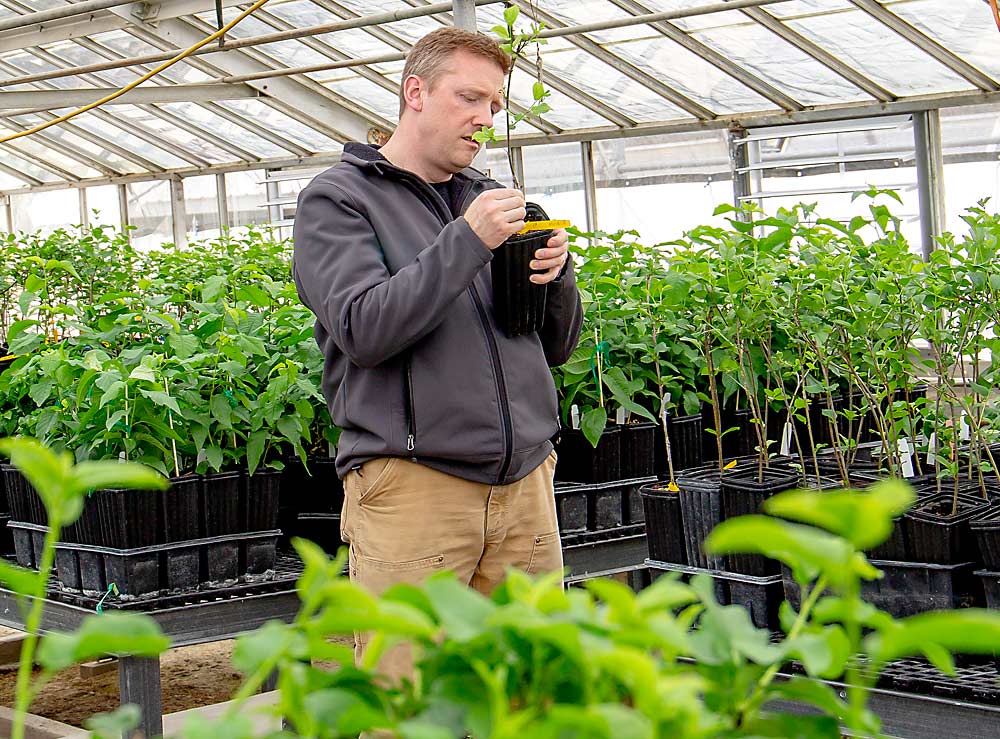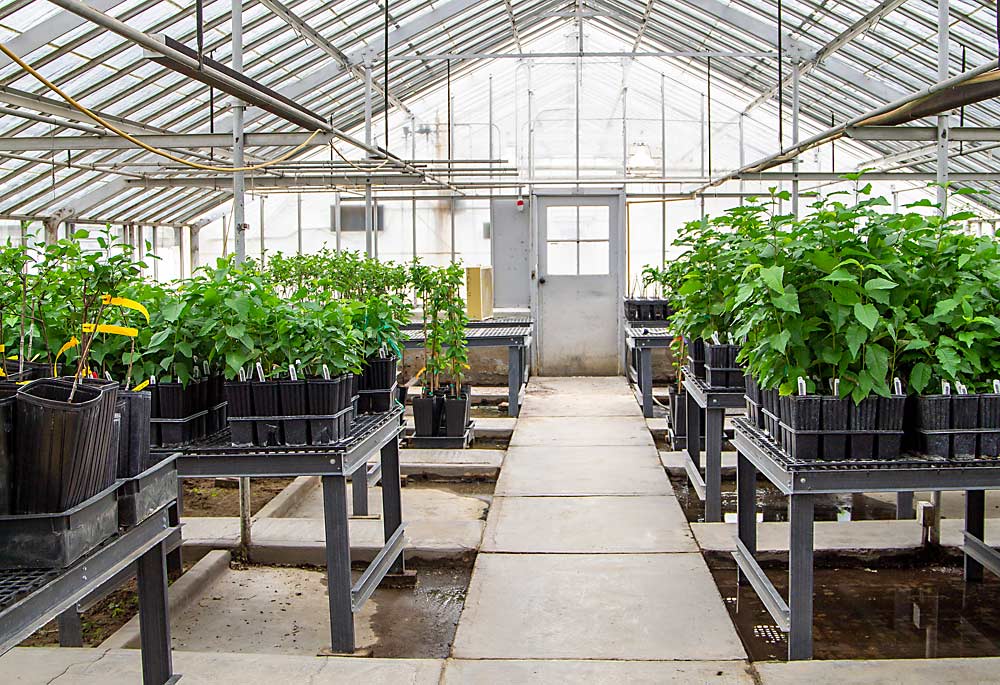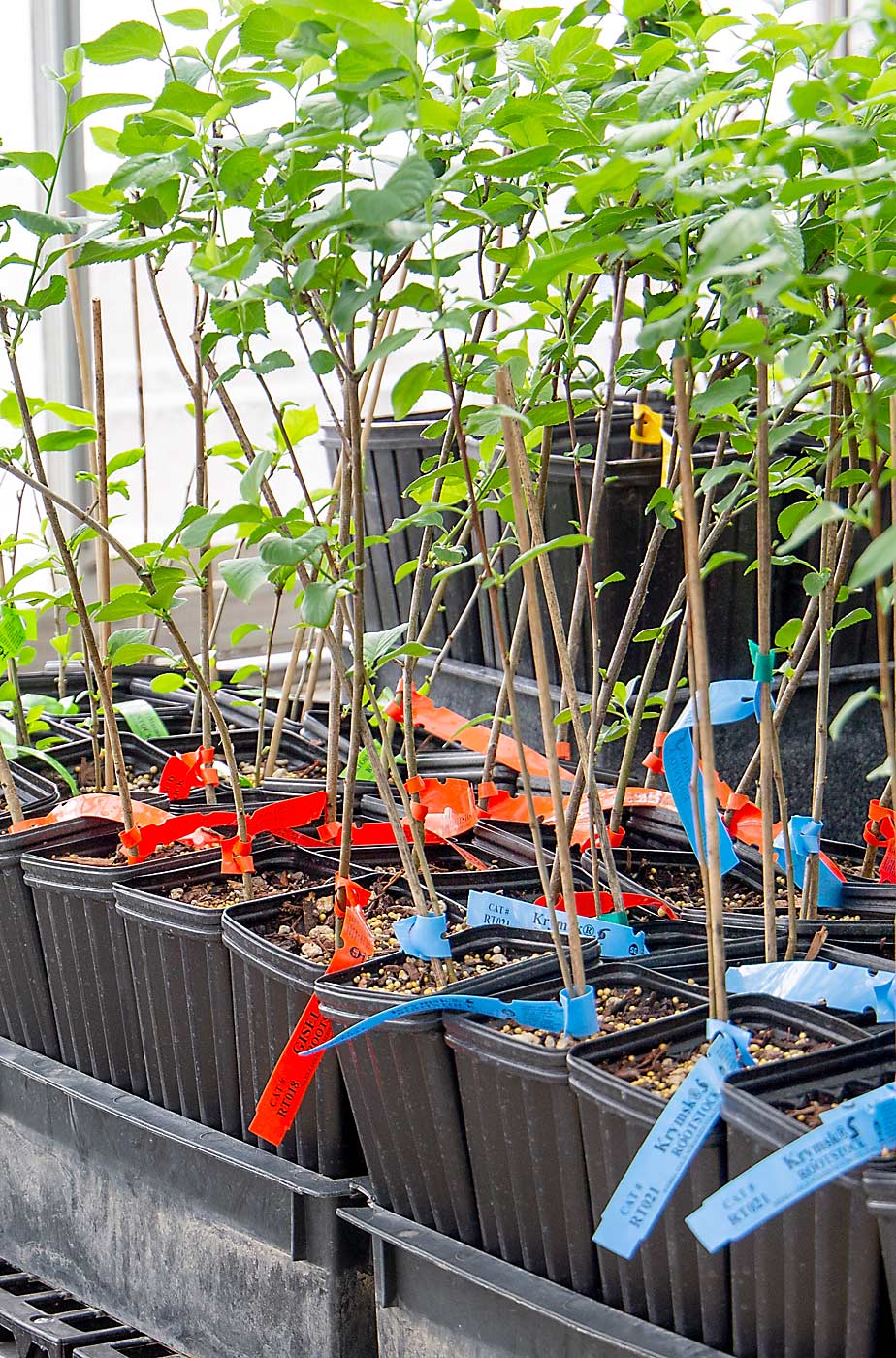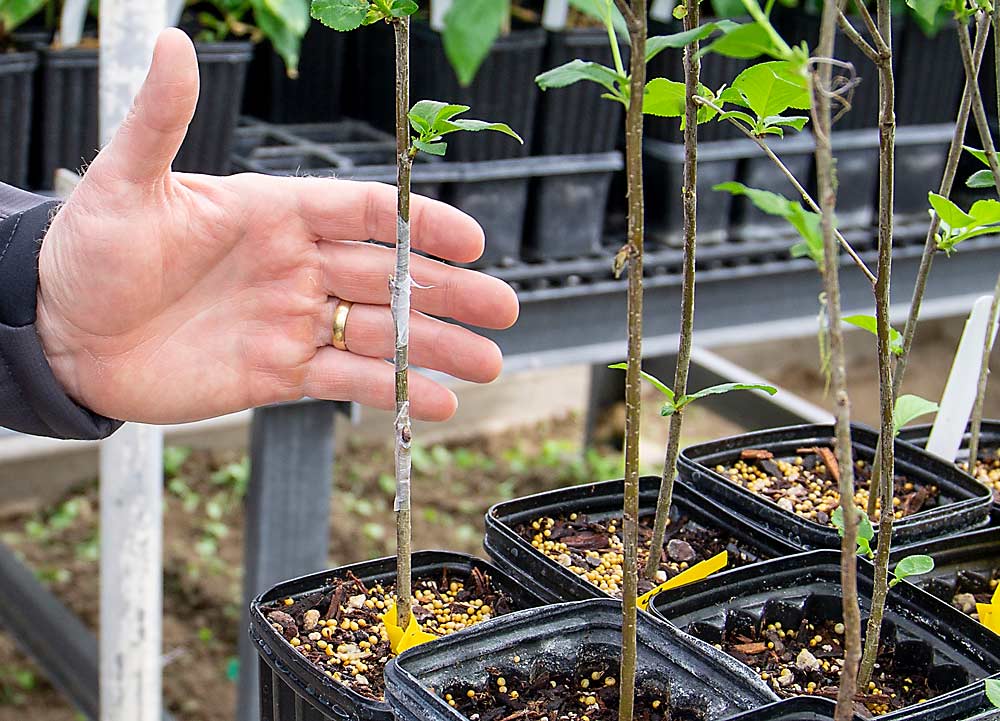
With a week or so to go before sweet cherry bloom began, Washington State University stone fruit breeder Per McCord finalized his crossing plan. The goal: more than 10,000 seeds from at least 40 crosses, targeting large, early maturing cherries that are also self-fertile and powdery mildew-resistant.
“You’d like to have more seeds than you know what to do with,” McCord said. “Breeding is a numbers game. You need to produce as many seeds as possible, so you have something to work with.”
Successful seed set keeps a breeding program running, but hand pollinating cherry blossoms is both tedious and low-return. McCord hopes to boost the program’s success rate by using ReTain (aminoethoxyvinylglycine) to extend flower longevity and a technique called embryo rescue to get more viable seeds from early maturing fruit.
Those are just two of the new approaches McCord has for the reboot of the breeding program he took over in 2018; there’s also new greenhouse and lab equipment, a shift to growing parents in pots for protected greenhouse crosses and an experiment to see if budding selections onto precocious rootstocks can get them producing fruit for evaluation sooner.
During an April visit to his recently renovated greenhouse in Prosser, Washington, McCord showed off his newly acquired grafting skills (no rootstocks were required in his previous position breeding sugarcane) and the new barcode tags on all of the seedlings.

“We’re pushing these seedlings so we can bud them and get the budded trees out into the field the next summer. We want to get the seeds harvested early, germinated early and budded early so we don’t lose a year,” McCord said. “Everything we’re doing, grafting onto a rootstock, embryo rescue, pushing these seedlings, it’s all about getting through that cycle faster so you can keep making progress.”
Last year, just weeks into the job, he made 29 biparent crosses and also collected seeds from 10 open-pollinated crosses, resulting in 6,000 seeds. This year, he wants 10,000. But it is hard to get viable seeds from early maturing varieties, which is a top industry priority.
In some early stone fruit, the fruit ripens before the seeds mature. McCord saw this problem last year with early crosses — the seeds shriveled and became unviable — so this year he plans to try a technique called embryo rescue.
It’s new to the WSU cherry program but commonly used in other programs, including seedless grape breeding. The immature seeds are taken from unripe fruit and put onto a nutrient medium, which supports the development of the embryo the rest of the way.
Doing this work will require new lab equipment, and McCord also plans to install DNA extraction equipment so that he and his technicians can look for the DNA markers in their new selections in-house, rather than sending all the samples to WSU’s main campus in Pullman for analysis.

Markers for self-fertility and powdery mildew resistance guide crossing and selection decisions, but McCord said he also wants to use a process known as genomic selection to look at more complex traits that have more genes involved, such as fruit size and postharvest quality factors.
“It’s a mathematical model of many markers,” he said, likening the process to taking a 30,000-foot view of many key traits in the genome rather than the results of one or two specific tests. “I’m going to continue to find and use those specific yes/no markers, but at the same time I want to start using that genomic selection to get more progress.”
McCord also wants to expand the genetic diversity that the sweet cherry program can draw on, so he’s traveled to California to collect budwood and imported material from overseas. The focus on self-fertility, which is solely inherited from Stella, a cultivar developed after a radiation-derived mutation produced self-fertility, can limit the gene pool somewhat, he said.
On the side, he plans to experiment with crossing some wild cherry cousins to see if traits such as shorter juvenility or smaller growth habit could be incorporated into cultivars with high fruit quality. It’s a long shot, since they may not cross well, he said, but worth a try.
Crosses this spring will be made in the field, but McCord is preparing to move many of his prime parents into pots in a new greenhouse, with funding from the Washington Tree Fruit Research Commission.

“The long-term goal is to get the crossing out of the orchard and under cover,” he said. This will offer protection against frost and pathogens.
In the orchard, two Phase 2 selections are showing promise, and if they perform well this summer, McCord said he would move them to precommercial Phase 3. He shared information about these selections at the Cherry Fruit School hosted by WSU in March:
—R19 has Chelan timing but larger, firmer, sweeter fruit and is also self-fertile. More data on storage quality is needed, however.
—R29 matures at the same time as Bing but has the advantages of larger fruit and self-fertility.
—Two new selections were moved into Phase 2 plantings in Prosser last year, R45 and R51.
There are also a few selections remaining in what McCord calls Phase 1.5. “This is an artifact of going from one breeder to another,” he said. “Some were kept from the chainsaw because they had some promise, and we want to take another look this year.” •
—by Kate Prengaman






Leave A Comment